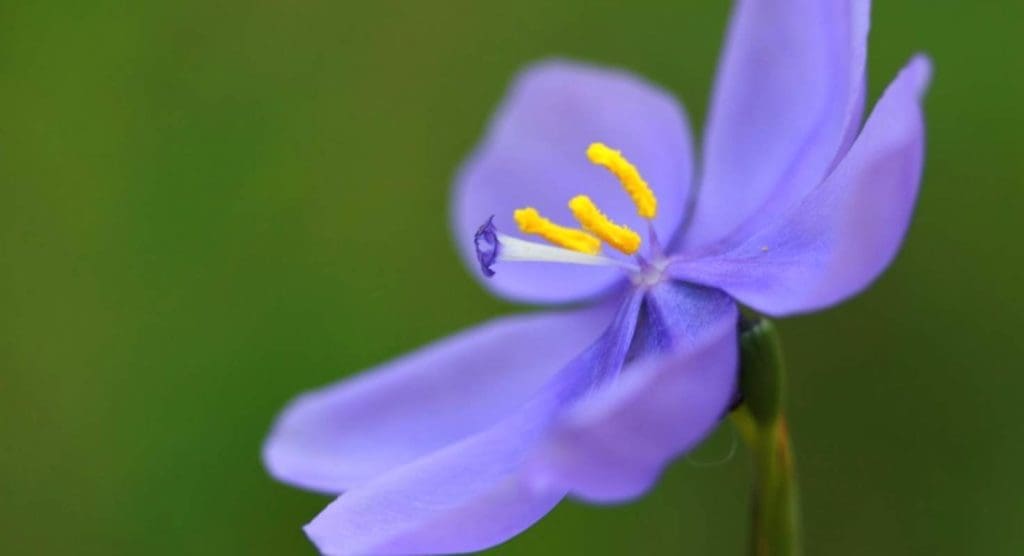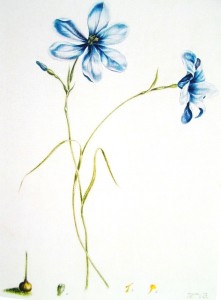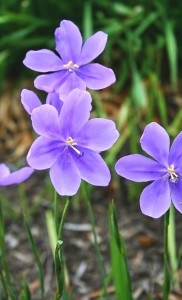What is Bartram’s Ixia?

 If you’ve ever seen or heard of the Florida plant Bartram’s Ixia, you may have wondered about the Bartram family connection. In that light, we asked curator Joel Fry to explain the history of this rare, but beautiful, native plant:
If you’ve ever seen or heard of the Florida plant Bartram’s Ixia, you may have wondered about the Bartram family connection. In that light, we asked curator Joel Fry to explain the history of this rare, but beautiful, native plant:
“William Bartram first described the Ixia plant (currently classified as Calydorea coelestina) in a letter to Benjamin Rush, dated December 5, 1767. William put together a detailed botanic description of the plant for Rush, shortly after it was first discovered by he and his father in Florida a year or two earlier. He wrote:
“The colour of this most delightfull of Flowers is a lively blue reflecting a slite cast of purple. The delicate texture of these Flowers is admirable beyond anything that Vigitation presents besides.”
 “William also made a very good color drawing of the Ixia for his London plant agent, Peter Collinson, probably sent in the autumn of 1767, which Collinson mentioned in a letter in early 1768 as a ‘fine Painting… beyond any Discreption.’ There is also some description of the Ixia in Travels.
“William also made a very good color drawing of the Ixia for his London plant agent, Peter Collinson, probably sent in the autumn of 1767, which Collinson mentioned in a letter in early 1768 as a ‘fine Painting… beyond any Discreption.’ There is also some description of the Ixia in Travels.
“Ixia has a very complex botanic history with many different names over time. Ixias are now generally as a genus are limited to South Africa—and there are a number of garden plants, grown as bulbs, often called ‘Cape bulbs’ that include Ixias and relatives. William Bartram’s blue Ixia is a rare plant with a limited range in Florida, so wasn’t generally seen by botanists and never grown in gardens—maybe once a generation someone found it, and would then give it another name.
 “The Ixia remains a rare plant in the wild, but it often crops up along highway cuts and new clearings in Florida, only to vanish after a few years. But I’ve also seen it recently offered as a cultivated plant—and people seem to have some more success growing it in pots than gardens these days.”
“The Ixia remains a rare plant in the wild, but it often crops up along highway cuts and new clearings in Florida, only to vanish after a few years. But I’ve also seen it recently offered as a cultivated plant—and people seem to have some more success growing it in pots than gardens these days.”


